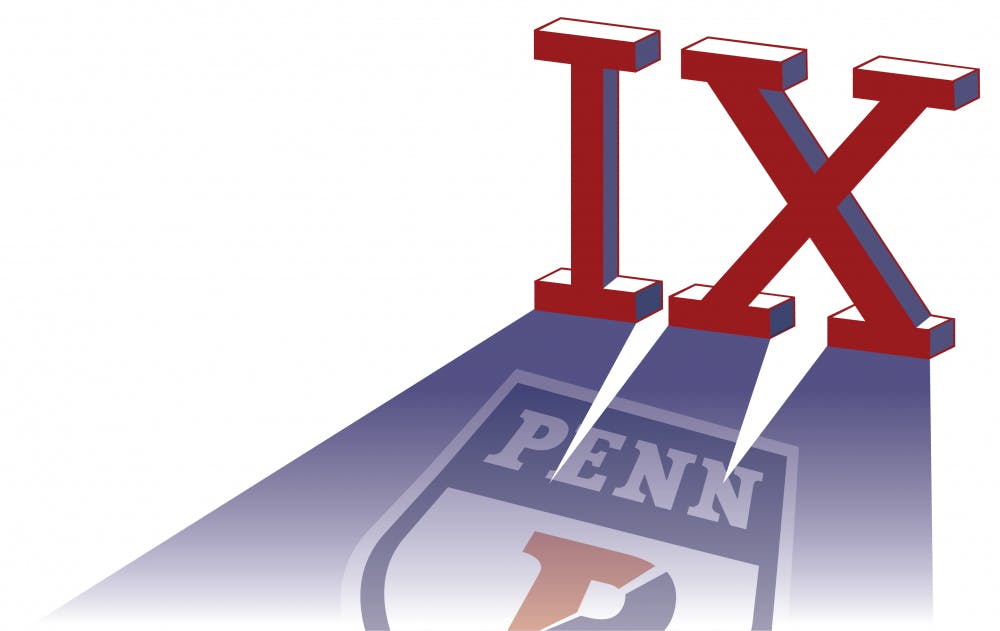
In the years since the U.S. passed its Title IX federal law, individual sports have actually seen fewer female coaches nationally — and Penn is no exception.
Credit: Tamsyn Brann , Christine Lam, Miriam MinskAcross the nation, the number of female coaches in college sports is decreasing. Additionally, Penn has the smallest number of female coaches of its women’s teams in the Ivy League.
But why is this a trend? And what is life actually like for such coaches?
All athletic directors have their own hiring methods, and all coaches interact with their respective teams differently, but both within Penn itself and the entire NCAA, team sports tend to have female coaches at a very high rate, while sports more individual in nature have been hiring male coaches in increasing numbers — and this is no coincidence.
Penn is perhaps one of the best examples of this concept. Penn has six women's programs in the true team sports: basketball, soccer, field hockey, volleyball, lacrosse and softball. Five of these six teams’ head coaches are female; the lone exception is women’s basketball’s Mike McLaughlin.
In contrast, of Penn’s nine women’s teams with larger individual aspects, only one coach is female: women’s tennis’ Sanela Kunovac, who declined to interview for this story. But why is this the case?
For starters, one major factor is the occasional overlap involving one coach simultaneously in charge of both men’s and women’s teams. In a true team sport like basketball or soccer, factors such as designing different playbooks and managing totally separate personnels render coaching two teams in one sport infeasible.
But in a sport like swimming or track and field, the dynamic is different. Male and female athletes learn the same techniques, and their teams don’t necessarily have different tactics. As a result, it is more feasible for a single coach to lead two teams in these instances. Penn has taken full advantage of this, with track and field, swimming, cross country, and fencing being led by one head coach for men and women — a male coach in every case.
“We felt this structure worked well for us,” former Penn Athletic Director Steven Bilsky said in July. “Mike Schnur [swimming], Steve Dolan [track and cross country], Andy Ma [fencing] and Jack Wyant [squash] all produced squads who have made a national impact. ... It's possible if this model changes in the future, there will be more total head coaches at Penn.”
But the “overlap” factor only accounts for a small portion of athletic teams. There are other explanations for the team vs. individual sport imbalance, one of them being that, to many in the hiring process, playing experience is a near-requisite to successful coaching.
Most American men don’t grow up playing sports like field hockey or softball, and even in lacrosse, the men's and women's games have two totally different sets of rules. As such, when it comes time for athletic directors to find prospective coaches in these sports, it’s often nearly impossible for those coaches to be male if the schools seek candidates who have played the sport before.
This is largely reflected by the statistics within both the Ivy League and the entire NCAA — the Ivy League has eight female coaches in women’s lacrosse and softball and seven in field hockey, while Division I itself also had major female-heavy skews in field hockey (83.5 percent), women’s lacrosse (91.2 percent) and softball (64.3 percent) as of the 2016-17 school year.
Again, in the individual sports, the concept is often largely flipped. If a male golfed in college, he can teach some swing mechanics to male or female golfers; if a male high jumped competitively, he can teach the “Fosbury Flop” to athletes of any gender.
Consequently, there are no individual sports in which females constitute even half of the Ivy League women’s head coaches — and at the national level, women's golf and women's gymnastics are the only individual sports where women accounted for at least 40 percent of the country’s head coaches.
“[What doesn’t change between men and women] is what it’s like every day to come out and work and have work ethic and deal with the highs and lows of the sport,” said McLaughlin, the only male head coach in Ivy League women’s basketball. “I feel comfortable, but I don’t have that background, because I didn’t play the women’s game. And what I don’t understand at times, I do ask my assistant coaches who played on the women’s side. I’ll ask, ‘what’s the best solution to this, what did you feel when you were in that position?’”
But overall, the biggest factor in more women coaching team sports could be the one that’s the least statistically quantifiable — the ability to relate to players behind closed doors.
Needless to say, male and female athletes are different in a plethora of ways, both on and off the field. With the ways athletes interact with their teammates in the locker room, their social lives, and the general life problems any of them might be facing, there are certain things that ultimately only men can understand about men, and only women can understand about women.
“I support a rule that on every women’s team, there should be a female staff member. I think it’d be no different if I coached a male sport, I’d think there should be a male on that staff,” Penn women's soccer coach Nicole Van Dyke said. “You have to make sure you have people to relate to; there are things that women just might not feel comfortable talking to males about.”
While teammates across all sports interact with one another, members of a cross country or golf team don't necessarily need synergy or chemistry with fellow student-athletes in order to succeed.
In the team sports, though, individual work can only go so far. It’s impossible to see a team in basketball or field hockey improve without training as a collective unit greater than the sum of its individual parts.
Teammates in these sports testify that they really do need a sense of “family” to succeed, and their off-the-field environment is a major facilitator of this notion — one that a coach can make or break.
“That locker room dynamic is huge, and I think having strong female assistant coaches to be able to help manage the locker room, to have the needs of the players met when they need to be, that is an area in which we’ve done exceptionally well,” said McLaughlin, whose three assistant coaches are all women. “The health of a locker room is huge in sports; some people who don’t play sports don’t understand ... But the way we treat each other and conduct ourselves in the locker room carries itself out there, and having that presence [of female assistants] with the ladies, it’s awesome.”
Interestingly, women’s soccer seems to be the lone exception in terms of female coaches in team sports. Including Van Dyke, the Ivy League has only three female coaches, and across the country, a meager 26.6 percent of D-I women’s squads are led by women.
Understandably seeking more equality in this realm, Van Dyke expressed disappointment at the lack of development of female coaches at younger age levels, but was still optimistic that soccer could gradually catch up.
“I’m not against men coaching women. I was coached by a man [at CSU Bakersfield], and one of the greatest gifts he gave me was that he empowered me to want to coach. And so other men can do the same; men can empower their women to go on and be coaches,” she said. “I don’t want it to ever be looked at as men stealing jobs from women — I think we need to partner with men.”
Aside from soccer, though, it seems that these nationwide trends are relatively set in stone. Studies in recent years have been undoubtedly right regarding the sharp decline of female coaches — and independent of the causes of the lack of women coaches in individual sports, at least in the team sports, it appears that female leaders are here to stay.
The Daily Pennsylvanian is an independent, student-run newspaper. Please consider making a donation to support the coverage that shapes the University. Your generosity ensures a future of strong journalism at Penn.
Donate






